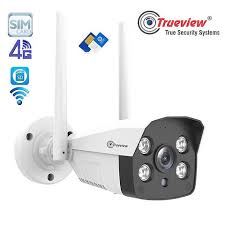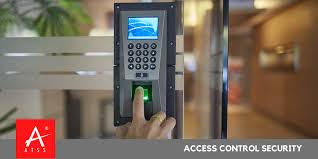Vaccine Safety Surveillance: Ensuring Public Health through Monitoring and Reporting
Vaccines play a crucial role in preventing the spread of infectious diseases and protecting public health. As millions of people receive vaccines worldwide, it is essential to have robust systems in place to monitor and ensure the safety of these vaccines. This is where vaccine safety surveillance comes into play.
Vaccine safety surveillance involves the continuous monitoring, evaluation, and reporting of adverse events following immunization (AEFI). By closely monitoring the safety profile of vaccines, health authorities can quickly detect any potential safety concerns and take appropriate actions to address them.
There are several key components of vaccine safety surveillance:
- Passive Surveillance: In passive surveillance systems, healthcare providers and the public are encouraged to report any adverse events that occur after vaccination. These reports are crucial in detecting rare or unexpected side effects that may not have been identified during clinical trials.
- Active Surveillance: Active surveillance involves actively monitoring a defined population for adverse events following vaccination. This proactive approach allows for more comprehensive data collection and analysis, enabling health authorities to quickly identify any patterns or trends in vaccine safety.
- Post-Marketing Studies: Post-marketing studies are conducted after a vaccine has been approved for use and are designed to further evaluate its safety profile in real-world settings. These studies provide valuable insights into the long-term safety of vaccines and help inform public health policies.
Continuous vaccine safety surveillance is essential for maintaining public trust in immunization programs. By transparently reporting on vaccine safety data and promptly addressing any safety concerns, health authorities can ensure that vaccines remain a safe and effective tool for disease prevention.
In conclusion, vaccine safety surveillance plays a critical role in safeguarding public health by monitoring the safety of vaccines and ensuring their ongoing effectiveness. Through robust surveillance systems and proactive monitoring efforts, we can continue to strengthen immunization programs and protect communities from preventable diseases.
Understanding Vaccine Safety Surveillance: Key Questions and Answers
- What is vaccine safety surveillance?
- What is pharmacovigilance safety surveillance?
- What is the vaccine safety surveillance?
- What is vaccine pharmacovigilance?
- What is the objective of vaccine safety surveillance?
- What is surveillance in vaccination?
- What is vaccine safety testing?
- What is safety surveillance system?
What is vaccine safety surveillance?
Vaccine safety surveillance refers to the systematic monitoring and evaluation of adverse events following immunization (AEFI) to ensure the safety of vaccines. It involves the continuous collection, analysis, and reporting of data on any potential side effects or complications that may occur after vaccination. By actively monitoring vaccine safety, health authorities can promptly detect and investigate any safety concerns, allowing for timely interventions if needed. Vaccine safety surveillance plays a crucial role in maintaining public confidence in immunization programs and ensuring that vaccines remain a safe and effective tool for disease prevention.
What is pharmacovigilance safety surveillance?
Pharmacovigilance safety surveillance is a crucial aspect of monitoring the safety of pharmaceutical products, including vaccines. It involves the systematic collection, assessment, and reporting of adverse drug reactions and other safety-related information to ensure the ongoing safety and effectiveness of medications. In the context of vaccines, pharmacovigilance safety surveillance plays a vital role in detecting and evaluating any potential adverse events following immunization (AEFI). By actively monitoring and analyzing vaccine safety data, pharmacovigilance helps to identify any emerging safety concerns and inform public health policies to ensure the continued well-being of individuals receiving vaccinations.
What is the vaccine safety surveillance?
Vaccine safety surveillance refers to the systematic monitoring and evaluation of adverse events following immunization (AEFI) to ensure the safety of vaccines. This process involves collecting, analyzing, and reporting data on any unexpected or harmful effects that may occur after vaccination. By actively monitoring the safety profile of vaccines through various surveillance mechanisms, health authorities can swiftly detect and respond to any potential safety concerns, ultimately safeguarding public health and maintaining confidence in vaccination programs.
What is vaccine pharmacovigilance?
Vaccine pharmacovigilance, also known as vaccine safety surveillance, is a critical component of public health monitoring that focuses on the detection, assessment, understanding, and prevention of adverse effects or any other vaccine-related problems. It involves the systematic collection and analysis of data to ensure the ongoing safety and effectiveness of vaccines. Vaccine pharmacovigilance plays a pivotal role in maintaining public confidence in vaccination programs by promptly identifying and addressing any potential safety concerns associated with vaccines. By continuously monitoring and evaluating vaccine safety, healthcare authorities can take proactive measures to mitigate risks and uphold the highest standards of vaccine quality and safety.
What is the objective of vaccine safety surveillance?
The primary objective of vaccine safety surveillance is to monitor and evaluate the safety of vaccines in real-world settings. By continuously monitoring adverse events following immunization (AEFI), the goal is to promptly detect and assess any potential safety concerns associated with vaccines. Through proactive surveillance efforts, health authorities aim to ensure the ongoing safety and effectiveness of vaccines, maintain public trust in immunization programs, and ultimately protect the health and well-being of individuals and communities.
What is surveillance in vaccination?
Surveillance in vaccination refers to the systematic monitoring and tracking of vaccine safety and effectiveness. It involves collecting, analyzing, and interpreting data on adverse events following immunization (AEFI) to ensure the continued safety of vaccines. Surveillance helps health authorities detect any potential issues or trends related to vaccine safety, allowing for timely interventions and adjustments to vaccination programs if needed. By conducting surveillance in vaccination, public health officials can maintain confidence in immunization programs and make informed decisions to protect the health of individuals and communities.
What is vaccine safety testing?
Vaccine safety testing refers to the rigorous evaluation and assessment of vaccines to ensure their safety and efficacy before they are approved for public use. This process involves conducting extensive preclinical and clinical studies to assess the vaccine’s safety profile, including its potential side effects and adverse reactions. Vaccine safety testing also involves monitoring the immune response generated by the vaccine and evaluating its effectiveness in preventing disease. By subjecting vaccines to thorough testing protocols, regulatory authorities can make informed decisions about their safety and benefits, ultimately safeguarding public health.
What is safety surveillance system?
A safety surveillance system is a structured and systematic approach to monitoring and evaluating the safety of vaccines or other medical products. It involves collecting, analyzing, and reporting data on adverse events following immunization to ensure the ongoing safety of vaccines. By actively monitoring and assessing the safety profile of vaccines, safety surveillance systems help detect any potential risks or side effects that may arise post-vaccination. This proactive approach is essential for maintaining public confidence in immunization programs and ensuring the continued effectiveness of vaccination efforts in safeguarding public health.



